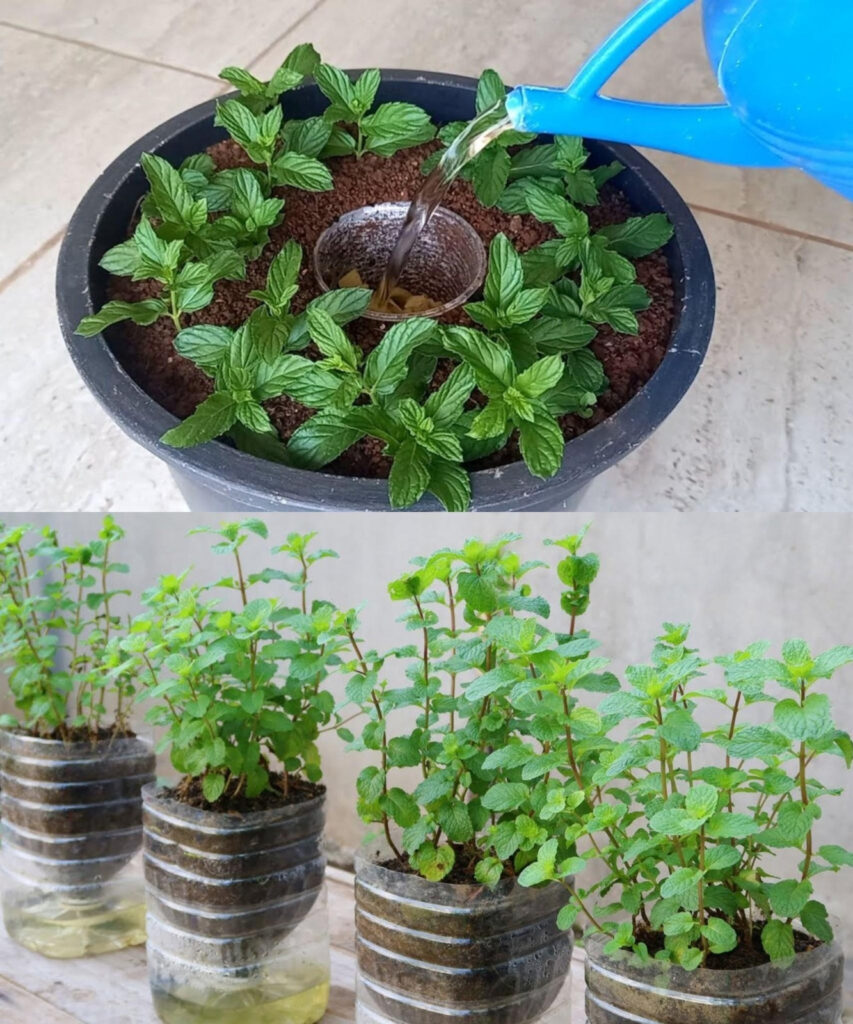Growing mint indoors is a great way to have fresh herbs readily available for cooking, teas, and more. Mint is a hardy herb that adapts well to indoor conditions. Here are three effective methods to grow mint indoors:
1. Growing Mint in Soil
Materials Needed:
- Mint cuttings or starter plants
- A pot with drainage holes
- High-quality potting soil
- Watering can
Steps:
- Choose the Right Container: Select a pot with good drainage. Mint grows vigorously, so a container that’s at least 8-10 inches in diameter is ideal.
- Prepare the Soil: Fill the pot with a high-quality potting mix. Mint prefers well-draining soil with a pH between 6.0 and 7.0.
- Planting: Plant mint cuttings or starter plants in the soil, spacing them about 6 inches apart if planting multiple in one container. Ensure the roots are well-covered with soil.
- Watering: Water thoroughly after planting. Keep the soil consistently moist but not waterlogged. Water the plant when the top inch of soil feels dry.
- Light: Place the pot in a location that receives at least 4-6 hours of indirect sunlight daily. A south-facing window is ideal. If natural light is insufficient, supplement with a grow light.
- Maintenance: Regularly pinch off the tips of the stems to encourage bushy growth. Remove any yellowing or dead leaves.
2. Growing Mint in Water
Materials Needed:
- Mint cuttings
- A glass or jar
- Water
Steps:
- Prepare the Cuttings: Take cuttings from a healthy mint plant, ensuring each cutting is about 4-6 inches long with several sets of leaves. Remove the leaves from the lower half of the cutting.
- Place in Water: Fill a glass or jar with water and place the mint cuttings in it, ensuring that the bottom nodes (where leaves were removed) are submerged.
- Position: Place the jar in a location that receives indirect sunlight. Avoid direct sunlight as it can promote algae growth in the water.
- Water Maintenance: Change the water every few days to prevent stagnation and algae buildup. Ensure the cuttings always have enough water.
- Transplanting (Optional): Once the cuttings develop a good root system (usually within a few weeks), you can transplant them into soil if desired.
3. Growing Mint Hydroponically
Materials Needed:
- Mint cuttings or starter plants
- Hydroponic system (e.g., Kratky method, deep water culture, or a commercial hydroponic setup)
- Nutrient solution
- pH meter and pH adjusters
- Grow lights (if necessary)
Steps:
- Prepare the Hydroponic System: Set up your chosen hydroponic system according to the manufacturer’s instructions. Ensure it has proper aeration if needed.
- Nutrient Solution: Mix a hydroponic nutrient solution according to the package instructions. Maintain a pH level between 6.0 and 7.0.
- Planting: Place mint cuttings or starter plants in the growing medium (e.g., rock wool, coco coir, or perlite) and position them in the hydroponic system.
- Light: Provide at least 4-6 hours of light daily. If using grow lights, place them about 6-12 inches above the plants and keep them on for 12-16 hours per day.
- Maintenance: Regularly check the water level and nutrient concentration. Adjust the pH if necessary and replenish the nutrient solution as needed. Prune the plants regularly to encourage bushy growth and prevent overcrowding.
General Tips for Growing Mint Indoors:
- Temperature: Mint thrives in temperatures between 65-70°F (18-21°C).
- Humidity: Mint prefers moderate humidity levels. If the indoor air is dry, consider using a humidity tray or misting the plants occasionally.
- Pests: Keep an eye out for common pests like aphids and spider mites. Use insecticidal soap or neem oil if necessary.
By using one of these methods, you can successfully grow mint indoors and enjoy its fresh, aromatic leaves year-round.


